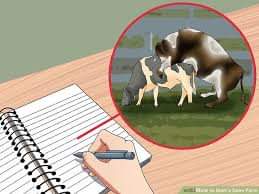Dr. Vikas Sachan, assistant professor,
Department of Veterinary Gynecology and Obstetrics, DUVASU, Mathura.
Dr. Abhishek Kumar, Sr. Vet. Officer, Sarda dairy and food products Ltd, Raipur
In terms of genetic improvement and less chances of veneral disease transmission, Artificial Insemination is better technique than natural service. Not only heat detection and good reproducibility of female animal but prediction of right time efficient insemination with good quality semen is also important for successful pregnancy. There are hundreds of hurdles are there responsible for repeat breeding and to determine optimum time of insemination is one of them faced by the veterinarians at the field. In more clear words it is important to know the time of ovulation to assess the optimum time of insemination to avoid fertilization failure and embryonic loss.
Generally dairy animals (cattle and buffaloes) are non seasonal polyestrous display estrous with an average estrous cycle length of 18-23 days (average 21 days) with proestrous, oestrous, metestrous and diestrous of about 3 days, 12 to 24 hrs, 3 to 5 days and 12 to 14 days. Generally time of ovulation in dairy animals is about occurs at about 12 to 14 hrs after end of oestrous or 30 hrs after start of estrous. One can say the detection of estrous in cattle is as much as an art as a science. Person engaged in heat detection should be efficient in understanding the behavioural and physical signs of estrous which are coincide with various changes in circulatory and nervous system along with reproductive system mainly because of hormone estrogen. Early estrous signs include increased physical activity, restlessnesss results in greater physical activity, nudging other cows, elevating tail head, repeated attempts to mount other cows but not stand to be mounted etc along with frequent bellowing, micturition, licking and sniffing of the genital area of other cows. Vulva and vaginal mucosa becomes swollen and congested. During Standing Estrous a cow stands to be mounted by another cow. A thin and crystal clear mucus discharge from genitalia is the symptom of mid-estrous due to which tail head and area near and pin bones becomes wet. Reduced feeding and milk yield may support the estrous stage. During late estrous cows no longer stand to be mounted. Dried mucus with dirt and dung near perineal area and tail hairs indicates the late or passed estrous. Standing behaviour is closely related to the time of ovulation as conception rate may be 60-70% when cows bred on the basis of standing heat. Taking into consideration about fertile life of ova and sperm, If an animal is found to be in heat, it may be inseminated 10 to 12 hrs after onset of estrous or at mid to late estrous is recommended for successful conception with maximum probability. AM-PM rule can be followed i.e. animal found in estrous in morning should be inseminated in evening and animal found in estrous in evening should be inseminated next morning. It is also recommended that if an animal remains in heat beyond this time period, second insemination can be done after 12 hrs. In buffalo insemination should be done at late heat because the ovulation occurs somewhat later than in cows.
In estrus there is copious clear and stringy mucus secretion from cervical glands whose physical and rheological characters are changing during estrous phase. When the smear of estrual discharge is air dried and observed under microscope, the typical fern / arborisation pattern is formed due to sodium chloride crystallization under influence of estrogen and it is the optimum time of insemination.
Per rectal examination of genital shows pattern of hyperemia of vaginal mucosa, open external os, tonic uterus and either ovary with a matured follicle during estrous phase. It may help in predicting estrous phase especially at field level.
Ultrasonography (USG) of the genitalia especially ovary helps in determining the time of ovulation. A mature follicle of size about 13 to 15 mm on either ovary indicates the time of insemination. Along with estrous symptoms, USG is the most efficient method to predict time of ovulation. The progesterone concentration is below 1 ng/ml at estrous in serum and blood of dairy animal but this method cannot be performed easily at field level or veterinary hospitals.
With the help of scientific knowledge about reproductive physiology of female animals, physiological changes during estrous, heat symptoms, per rectal examination and ultrasonography examination etc are the key methods to predict the optimum time of insemination. Accuracy in these methods definitely leads to the successful conception in dairy animals which is important for economical growth of the animal owner.


